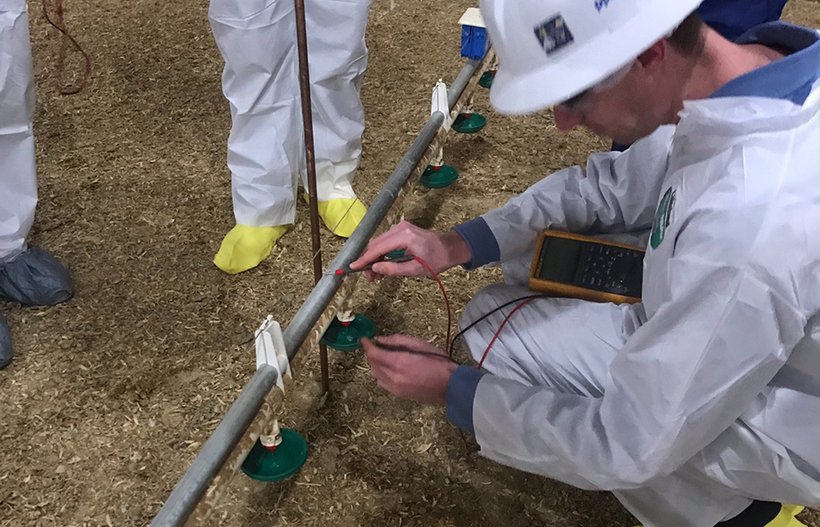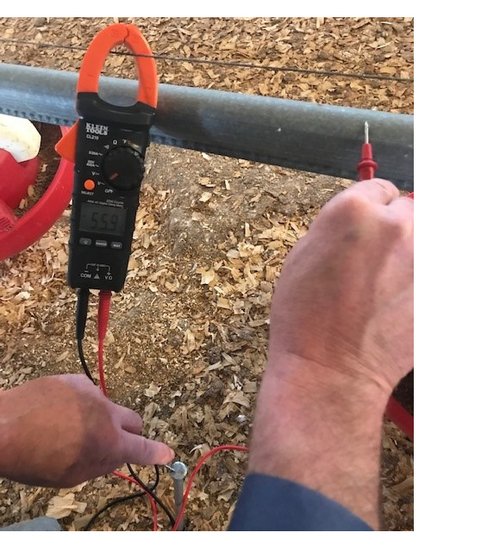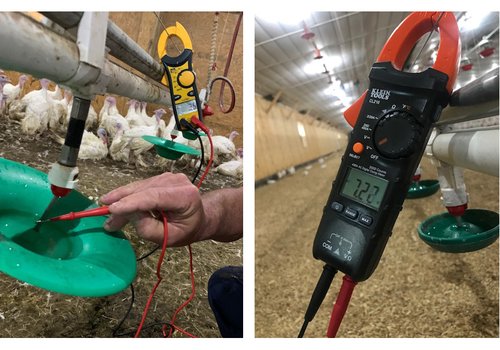
Published on May 21, 2021
Stray Voltage: Have you looked lately?
This week, we are happy to present the first guest post from Director of Technical Services for Best Veterinary Solutions, John Menges. In this article, John reviews the key takeaways of stray voltage and how it may impact your flock.
After receiving positive feedback on our How-to video: Stray voltage, we wanted to highlight another technical article on the importance of testing for stray voltage. This article was originally published in the March 2020 edition of BVS’ newsletter, Poultry Talk. Visit the BVS website to learn more about their resources and services.
As poultry production people, we spend a lot of time and effort trying to get the maximum genetic potential from our birds. We spend a significant amount of money toward this goal – feed and water systems, automatic environmental controllers, water sanitation products, probiotics, nutrition…the list goes on and on. Still, in some cases, we struggle to get the most from these investments in performance (weight gain, livability, and feed conversion) and end up asking WHY??
Recently (within the past several months), a colleague in the turkey industry has opened my eyes to looking into stray voltage. Kirstin Bordner, Turkey Manager at Empire Kosher, has helped me understand how to measure and look at the potential effects of stray voltage. In this article, I am going to share some field experiences with looking into stray voltage. She started working on a turkey farm that started off with great performance when the houses were new and has tailed off with poor weight gains and uniformity in the past year or so.
When trouble shooting farms with performance issues, or just to make sure I am covering all bases, I take care of all I can – biosecurity, water sanitation, ventilation, vaccination procedure, gut health and supportive care. I have added stray voltage to the list. Now, I want to qualify myself by saying I am not qualified to be talking about electricity. It scares me. But, checking for stray voltage on drinker and feed lines is simple, even for me. In this edition I am not going elaborate into a lot of detail relating to the dynamics of electricity, but a few definitions are in order. Therefore, please reference the ones outlined below by Dr. Paul Patterson, Penn State University, he recently highlighted these during a stray voltage panel discussion in February.
- Stray voltage: small voltage (less than 10 v) measured between two points that can simultaneously be touched by the bird.
- Electricity: the movement of electrons; they create a charge which we harness to do work
- Voltage: the difference in charge between two points
- Current: the rate at which charge flows
- Resistance: a materials tendency to resist the flow of charge (current)
Conclusions
- Stray voltage can impact poultry behavior, drinking, feeding, production and mortality
- Consider the measured and after-hours undetected voltage as causative factors
- Consider contact, conductive surfaces and the resistance of the bird as impedance factors influencing the realized current

Bottom line there is little known about the levels of stray voltage or current that can cause problems in turkeys. Cattle, yes – 0.50 volts can cause problems in cattle. We believe that 0.50 – 1.0 volts may be a problem for turkeys depending on size and age in field conditions that vary, as well as what is being administered through the water. The purpose of this article is not to delve into that but rather to share field experiences.
Testing is quite simple. Let’s start with nipple drinker lines. Drinker lines need to be raised high enough that birds can’t reach them. If this isn’t done, readings on the voltmeter will jump around and usually be about half of what they really are. This is due to the birds “grounding” the line while they are touching it. One lead touches the drinker and the other lead is touching a ground stake (I use a 12” spike hammered into the ground about 6”). In this instance we are getting 3.6 volts in the drinker line.
The same method is followed on feed lines (pictured above) testing areas on the feed tube and any metal parts on the pan itself that birds might touch. And, if the feed has enough fat or oil on it, and there is enough stray voltage in the line, you can find voltage in the feed itself.
Electrical anti-roosting wires ((ARW) example captured below) on top of the drinker or feed lines have been the largest source of voltage, especially in drinker lines. In the picture on the left, the ARW is turned off, yet we still have voltage. We need to research this further and discuss in a later edition of BVS Poultry Talk… stay tuned. The picture below on the right is voltage in the drinking cup with the ARW on. In all my testing, I have not seen less than 2 volts (and as high as 58 volts) in drinking cups. ARW’s are necessary to keep birds off drinker and feed lines. But, based on findings, timely intermittent use is necessary to keep birds from being exposed to stray voltage.

One may ask the question, why am I suddenly so interested in stray voltage? The reason is because I have been in well managed turkey houses with very good ventilation and have had extremely wet conditions under the drinker lines. My suspicion is that the birds become accustomed to understanding that they need to drink in shifts in order to ground the drinker line to avoid voltage implications. When this happens, they hit the water hard, resulting in excess water on the floor. I call this binge drinking. In some cases when voltage is high, certain parts of the floor will become very wet due to high consumption in that area, while other cups are completely dry because they refuse to drink in that area of the line. Water consumption measured over time by a meter does not reveal what’s happening because water is being wasted on the floor.
It’s also important to note that stray voltage in feed can result in feed wasted on the floor. High levels will make birds back out of the feeder and dropping it on the floor. In some cases, where there is spotty voltage along a line, certain pans will be the mainstays, which results in reduced available feeder space.
Once you have identified that you have stray voltage what do you do? Where does it come from? This is where the work really starts. There are a lot of sources for stray voltage in poultry houses. It is strongly recommended that once you have identified that you have an issue that needs to be addressed, contact a certified electrician and electric provider for help. On the right is a picture of industry professionals collaborating to correct a stray voltage problem.




